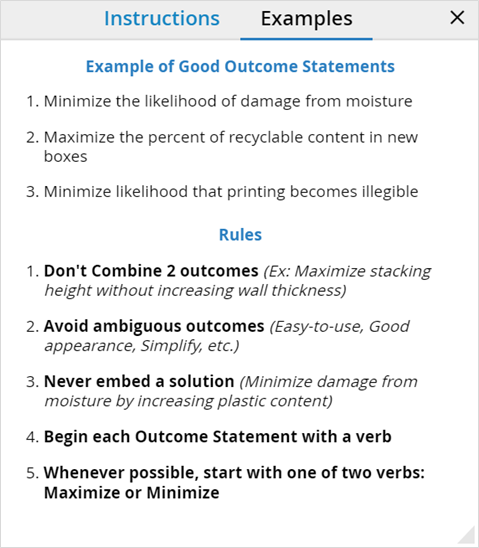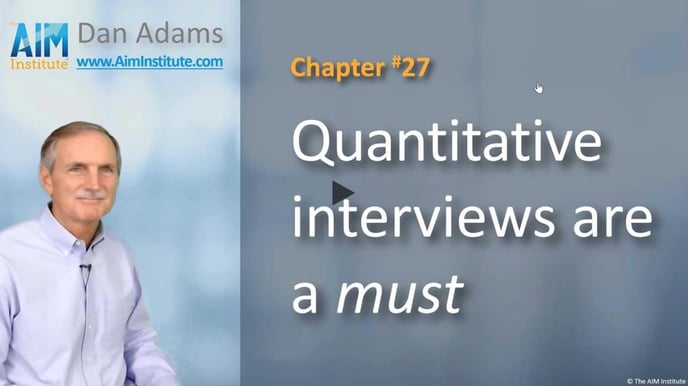Begin Preference interview prep-work by checking Discovery interviews for Top Picks, Must Haves & Outcome Statements.
During Preference interviews, you’ll ask customers to rate 10 outcomes on 1-to-10 scales for importance and current satisfaction. Why 10 outcomes? That’s typically all you’ll have time for in Preference interviews, because you’ll ask five questions for each outcome:
- How important is this outcome?
- How satisfied are you today with this outcome?
- How would you measure this outcome?
- Using this measurement, what result would be barely acceptable?
- Using this measurement, what result would make you totally satisfied?
You’ll decide internally as a team which 10 outcomes to include in Preference interviews, which might make you nervous: After all, we’ve been keen to stay market-centered, not supplier-centered, right? So we put some safeguards in place:
- You’ll only consider outcomes customers marked as a Top Pick (TP) during Discovery interviews
- You’ll consider how much customer enthusiasm was shown during Discovery interviews
- You’ll make your selection a team decision—not one individual on the team
- You’ll have a “safety net”… allowing customers to add “missed” outcomes during Preference
To begin the process, your team should review all its Discovery interviews. First make sure all the Must Haves are properly marked (blue arrow below). These are the outcomes customers must have… or they simply cannot use your product no matter how wonderful it is in other aspects. Think of these as “table stakes” or “price of entry.”

Here’s one tricky aspect: What if customers said an outcome was a Must Have because it had a minimum performance requirement, e.g. must survive 50,000 flexes? Hopefully you asked this question: “If we gave you more than 50,000 flexes, would it help?” If they answered, “No… we just need 50,000 flexes,” then it is indeed a MH. But if they said, “Yes, we’d love 60,000 or 70,000 flexes,” then it’s NOT a true MH. It’s a TP with a minimum requirement (barely acceptable) of 50,000 flexes.
Next, review your Discovery interviews to make sure all the Top Picks have been marked. These should have been identified at the end of each Discovery interview, as you asked customers to identify 5-to-10 outcomes they were most eager to see improved.
Finally, check for outcome statements on each TP. (There’s no need to do this for Must Haves.) These should have been created with the customer at the end of the interview… but this is often the last skill new Blueprinting practitioners master. So check your outcome statements now and “upgrade” them as needed. Go to www.blueprintingcenter.com > Blueprinter software > Tool 3.2: Prepare Top Picks… and click the “Example” button in the toolbar to open the following window showing examples and rules:

For more on this topic, see e-Learning Module 23: Preference Interviews A, at www.blueprintingcenter.com > e-Learning. Also, to see why quantitative Preference interviews are so important, check out this 2-minute video from the B2B Organic Growth series by Dan Adams.
Keywords: Check Discovery interviews, Prepare for Preference interviews, Top Picks, Must Haves, Outcome Statements, TP, MH, Outcome Statement rules and examples, Blueprinter Tool 3.2 Prepare Top Picks

